A Historical Analysis of Calligraphy Under the Deccan Sultanates
Introduction
The Deccan Sultanates, known for their cultural diversity and synthesis of various influences, fostered an environment conducive to artistic expression. Calligraphy, the art of beautiful writing, became a prominent feature of the Deccani artistic tradition. This paper aims to delve into the various aspects of calligraphy under the Deccan Sultanates, examining its styles, influences, integration into architecture, and the role of patrons and calligraphers. The Deccan Sultanates—comprising the Bahmani Sultanate, Bidar Sultanate, Bijapur Sultanate, Golconda Sultanate, and Ahmadnagar Sultanate—witnessed a flourishing of artistic endeavours during the medieval period. Among these, calligraphy emerged as a significant form of expression reflecting the cosmopolitan nature of the Deccan.
History of Deccan Sultanates and Calligraphy
The Deccan Sultanates were five late-medieval Indian kingdoms located on the Deccan Plateau between the Krishna River and the Vindhya Range, ruled by Muslim dynasties. These kingdoms were Ahmadnagar, Berar, Bidar, Bijapur, and Golconda. Despite being Muslim-ruled, the founders of these sultanates often came from diverse, non-Muslim origins. For instance, the Ahmadnagar Sultanate was founded by a Deccani Muslim of Brahmin origins, while the Berar Sultanate was established by a Kannadiga Hindu Brahmin slave brought up as a Deccani Muslim.
Calligraphy, derived from the Greek word 'kalligraphía' meaning ‘beautiful writing’, is a visual art related to writing. It involves the design and execution of lettering with various instruments such as pens, ink, and brushes. Contemporary calligraphic practice can be defined as "the art of giving form to signs in an expressive, harmonious, and skillful manner."
Calligraphic Influences on the Deccan Sultanates
The Persian and Arabic scripts exerted a profound influence on Deccani calligraphy. Calligraphers in the Deccan experimented with different scripts, leading to the evolution of a distinct Deccani calligraphic style that blended influences from the wider Islamic world with regional artistic elements. This fusion laid the groundwork for the development of Mughal and later Indo-Islamic calligraphic styles. The enduring impact of Deccani calligraphy is visible in the architectural marvels, manuscripts, and artistic expressions celebrated today.
The rulers of the Deccan Sultanates were avid patrons of calligraphy. Sultans such as Ibrahim Adil Shah II of the Bijapur Sultanate played a crucial role in supporting and nurturing calligraphers. Centres of learning were established where skilled calligraphers imparted their knowledge and techniques, facilitating the transmission of artistic traditions. This patronage not only elevated the status of calligraphers but also ensured that the art form was passed down through generations, preserving its unique characteristics.
Contributions of Individual Sultanates
Bijapur Sultanate
Bijapur, a fortified city in Karnataka, boasts hundreds of monuments built during the Adil Shahi Sultans' reign (1489-1686)[i]. The large single-domed Jama Masjid, built by Sultan Ali Adil Shah I in 1576, features profuse gilding and calligraphic decoration of the Qibla Mihrab, completed in 1636 under Sultan Muhammad Adil Shah[ii]. This mosque was one of the largest in the Deccan region at the time, highlighting the importance of calligraphy in religious and architectural contexts.
Bidar Sultanate
The Bidar Sultanate (1492-1619) witnessed the flourishing of Persian and Islamic art forms[iii]. Calligraphy, particularly in the Naskh and Thuluth scripts, was prevalent for religious texts, royal decrees, and building inscriptions. These scripts reflected broader Islamic artistic traditions and incorporated intricate designs, geometric patterns, and stylized Arabic or Persian script. Although Bidar did not develop a unique calligraphic style, its contributions to Islamic calligraphy were significant in preserving and propagating established styles.
Berar Sultanate
The Berar Sultanate (1490-1574) significantly contributed to calligraphy by patronizing skilled calligraphers and introducing new styles like Naskh, Thuluth, and Shikasta. These styles were adapted to local aesthetics, resulting in unique variations admired today. The Berar Sultans' patronage created a vibrant artistic environment, fostering innovation and excellence in calligraphy that left a lasting legacy in the region.
Ahmadnagar Sultanate
The Ahmadnagar Sultanate (1494-1636) was known for its rich cultural heritage, including calligraphy. The Nasta'liq and Thuluth scripts were commonly used for religious texts and manuscripts, characterized by vibrant colors, intricate designs, and geometric patterns. Calligraphers in the Ahmadnagar Sultanate produced beautiful Qur'ans and other religious texts, adorned with intricate calligraphy that reflected the influence of Islamic art and culture. The sultanate's dedication to preserving these art forms ensured their continued prominence in the region.
Golconda Sultanate
The Golconda Sultanate, also known as the Qutb Shahi dynasty, ruled parts of the Deccan from the late 15th to the late 17th century. Calligraphy flourished under their patronage, primarily using the Arabic script for religious texts, with Naskh and Thuluth scripts being prevalent. The Golconda rulers were great supporters of art and culture, and their patronage played a significant role in the development of calligraphy in the region. Calligraphers in Golconda often used Nastaliq, a cursive script popular for poetic compositions, showcasing the sultanate's rich literary and artistic traditions.
Conclusion
In conclusion, the study of calligraphy under the Deccan Sultanates unveils a captivating chapter in the cultural and artistic history of the Indian subcontinent. From Golconda to Bijapur and Ahmadnagar, a tapestry of scripts, strokes, and artistic expressions emerged, mirroring the synthesis of diverse cultural influences. The sultans of the Deccan were enlightened patrons of the arts, fostering an environment where calligraphy flourished. Arabic and Persian scripts intertwined with local influences, gracing the walls of majestic forts, mosques, and tombs, reflecting the religious, royal, and literary dimensions of the Deccan Sultanates. Calligraphers, often unsung artisans of immense skill, brought forth the beauty of the written word, transcribing verses from the Quran, royal decrees, and literary works. Their contributions have left an indelible mark on the artistic heritage of the region, continuing to inspire and be celebrated in contemporary times.
Farhan, the author, is a Degree student at Al Hidaya Islamic Academy Affiliated to Darul Huda Islamic University
## References
- Cousens, Henry. *Bijapur and its Architectural Remains*. Archaeological Survey of India, Vol. XXXVII, Imperial Series. New Delhi, 1916.
- Ahmad, Bashheeruddin. *Waqiyaat-e-Mamlukat-e-Bijapur*, Vol. I. Agra, 1915.
- Nazim, M. *Bijapur Inscriptions*. Memoirs of the Archaeological Survey of India, No. 49. New Delhi, 1936.
- Ahmad, Bashheeruddin. *Waqiyaat-e-Mamlukat-e-Bijapur*, Vol. 2. Agra, 1919. Reprint, Karnataka Urdu Academy, Bangalore, 2004.
- Yazdani, G. "Inscriptions in Golconda Fort." *Epigraphia Indo-Moslemica*, 1915-16. Archaeological Survey of India. New Delhi. Reprinted in 1987 in *Epigraphic Indica*, 1913-20.
- Abbas, Sayyid Anwer. "Three foreign calligraphers in Qutub Shah rule in Golconda India."
- Haidar, Navina Najat, and Marika Sardar. Sultans of Deccan India 1500–1700: Opulence and Fantasy.
- Michell, George, and Mark Zebrowski. Architecture and Art of the Deccan Sultanates.
[i] Dehlvi, Basheeruddin Ahmad-Waqiyaat-e-Mamlukat-e- Bijapur,Vol.2, Agra 1919, Reprint-Karnataka Urdu Academy, Bangalore 2004.
[ii] Architecture and Art of the Deccan Sultanates by George Michell, Mark Zebrowski
[iii] Sultans of Deccan India 1500–1700 opulence and fantas by Navina Najat Haidar and Marica Sardar
Disclaimer
The views expressed in this article are the author’s own and do not necessarily mirror Islamonweb’s editorial stance.
1 Comments
-
-

Farhan Olimugal
8 months ago
Thankyou madam
-

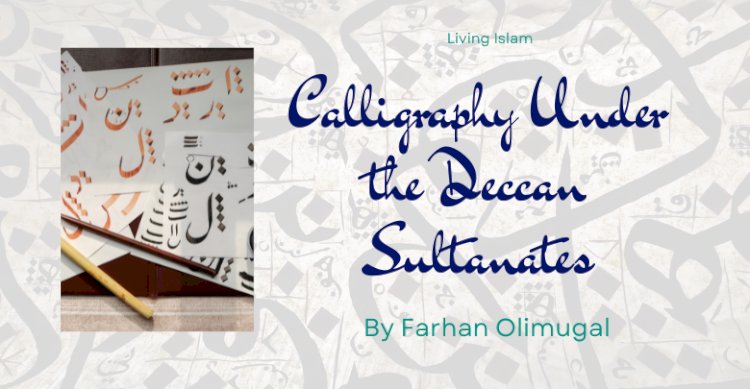


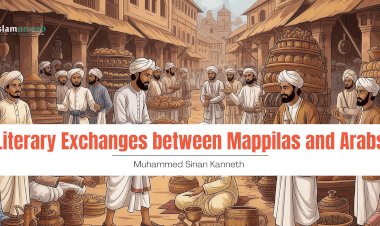

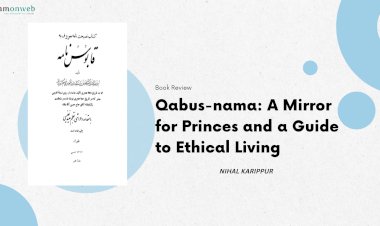
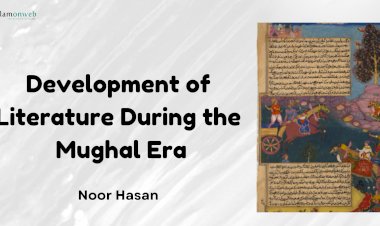
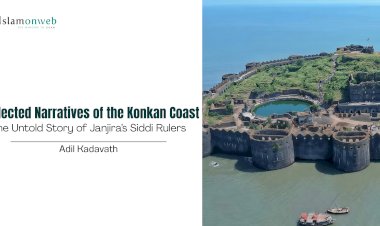















Leave A Comment